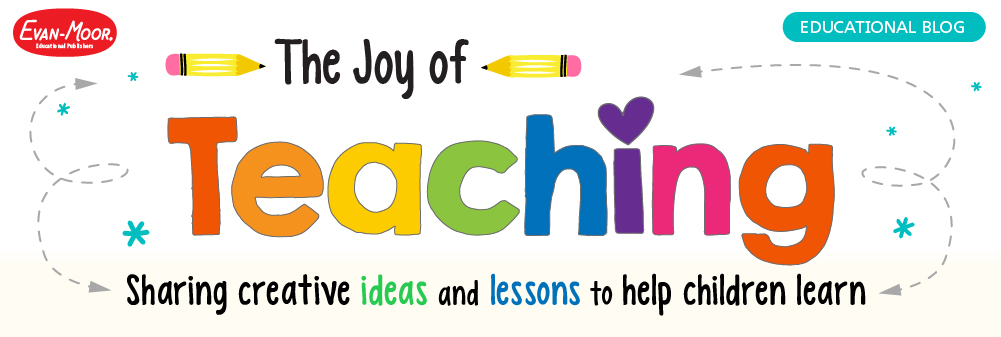


July 1, 2019 by Evan-Moor | 0 comments

When it comes to teaching art in our homeschooling, it is easy to get inspiration from what we experience in life. There are always seasonal or holiday events that get creativity going.
However, when you are ready for a more formal art curriculum, Evan-Moor’s How to Teach Art to Children is a terrific and comprehensive resource for teaching art in meaningful and fun ways!
How to Teach Art to Children was recently revised and updated, and each and every lesson is well-designed to help kids develop an awareness of different kinds of art. The goal is to invite kids to experience creating art to develop their art skills, as well as art appreciation.
From the very beginning of the book, the focus is on children exploring the process of art, rather than replicating someone else’s art.
The layout of How to Teach Art to Children is well organized and makes lesson planning easy!
The book begins with a general Materials List and a Words to Know list.

How to Teach Art to Children is then divided into two main sections. Each section has a separate “How to Use” guide to help you and the kids think about art in everyday life and as an expression of self and culture.
Part 1 is organized into 7 mini-sections, each of which offers multiple lesson plan options to teach the 7 elements of art.
Each step-by-step lesson plan focuses on one specific element of art – line, shape, color, value, texture, form, and space. The layout of each lesson is clear and easy to follow.
By teaching each of the 7 elements of art individually, children can focus on specific art skills in multiple lessons that feature each of the elements.

Part 2 focuses on specific art lessons that invite children to use the 7 elements of art in creating their own artwork. Evan-Moor has selected the work from 23 famous artists, cultures, and types of art to highlight how to use the elements of art. It is such an inspirational way for kids to see the lesson come to life!
Each assignment in Part 2 of How to Teach Art to Children is inspired by and features a specific piece of art for inspiration.
The lessons in Part 2 begin with background information about the artist or culture, as well as the artwork that is featured in the lesson. Evan-Moor also listed additional resources to learn about the artist or art form, which is a wonderful way to connect history, research, and other subjects to your art lessons.
The layout of each lesson in Part 2 makes both lesson planning and teaching very easy! Each art experience in Part 2 of How to Teach Art to Children includes:
Plus… A BONUS e-book:
When you purchase How to Teach Art to Children, you will also find a link and resource code to access the free Art and Artists e-book. This PDF features one full-color piece of art per page, so the children can easily see each piece featured in Part 2 of How to Teach Art to Children.

There is such a variety of lesson plan options that are offered for teaching each of the 7 elements of art! It would be easy to use How to Teach Art to Children year after year without repeating a single lesson.
As a homeschooler, we have used How to Teach Art to Children in two ways:
Since art is a favorite subject at our house, How to Teach Art to Children is a resource we use again every year! In fact, my kids have often selected to complete the same art activities over again because they want to apply new techniques to art activities they have already completed.
How to Teach Art to Children has really helped my kids learn how to use the 7 elements of art – even in their own drawings or designs they complete on their own.
Want to peek inside How to Teach Art to Children? Check out my video review here.
What is your kids’ favorite type of artwork to create?
Please let us know in the comments!

Amy Michaels is a certified teacher with 11 years of elementary classroom experience who is actively homeschooling her own children. Her mission is share the best teaching methods and resources with all homeschoolers. Amy supports parents through her podcasts, webinars, and online training for homeschoolers on her website www.thrivehomeschooling.com.